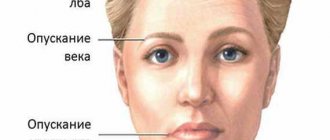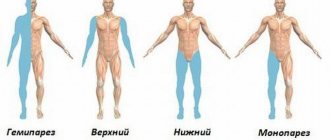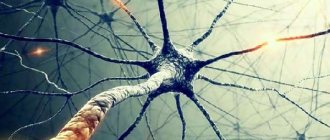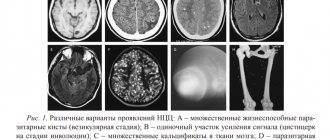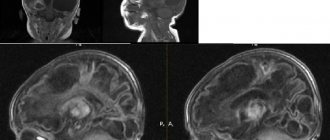Panic is one of the most powerful and vivid feelings a person can experience in his life. Negative emotions such as fear, horror, rage break out and take possession of him, he stops thinking soberly and tries to take illogical actions. All this accompanies sleep paralysis, which, having experienced at least once in life, no one wants to repeat. What is this and how to deal with it will be discussed below.
What do the statistics show?
The question of what causes sleep paralysis is under study. According to general statistics, approximately 7% of the population has experienced sleep paralysis at least once during their life. Students are more susceptible to it (28.3%). It has been hypothesized that the nature of such muscle paralysis may be due to irregular sleep or prolonged exposure to stress.
Data obtained from a study of the health of students show that 75% of students who experienced a state of sleep paralysis had at least one case of hallucinations at this moment. About 10% of respondents reported a frequency of hallucinatory visions of 3 or more times. 90% of students who were in a state of sleep atony experienced a strong feeling of fear and horror when falling asleep.
This sleep disorder occurs in the fairer sex 1-2% more often than in the stronger sex. Since the difference is insignificant, it means that the risk of developing sleepy stupor does not depend on gender. Sleep paralysis can also occur in children.
Patients with psychiatric diagnoses usually suffer from insomnia atony: it developed in 31.9% of such patients. Among patients diagnosed with panic disorder syndrome, sleepy stupor occurred in 35%.
Symptoms
The condition of sleep paralysis is characterized by symptoms:
- visual disturbances (hallucinations, out-of-body experiences, and otherworldly experiences);
- auditory disorders (auditory hallucinations, “voices”, the appearance of tinnitus, turning into a squeak);
- false body movements (the complete impression or experience of turning over from side to side, moving limbs during an attack);
- a feeling of the presence of a stranger or a frightening entity in the room, vestibular motor sensations, “alien abduction”;
- inability to speak;
- difficulty breathing (up to the impossibility of breathing).
It is believed that the sudden awareness of a paralyzed, and therefore uncontrollable and defenseless, body activates a system for responding to a threatening (uncertain) situation, evolutionarily built into the midbrain. This brain structure sends an alarm signal to the thalamus-amygdala system, which forms the general emotional background. In a potentially life-threatening situation, a synthesis of dreams that characterize the rapid stage of sleep and alarm signals occurs. This gives rise to hallucinations. And if a person has problems with the respiratory system (rapid breathing, hyperventilation, apnea), there is a feeling of being suffocated by a hostile entity, and the inability to breathe.
Development mechanism
Sleep as a physiological process consists of two phases: slow and fast. First comes the slow phase, then the fast phase, characterized by a drop in skeletal muscle tone. Breathing cycles become more frequent and inhalations become shorter. Brain activity during sleep increases to the level characteristic of the waking state.
In the case of a sleep disorder, the sequence of processes is confused, so a person becomes conscious before muscle tone normalizes. A feeling of immobility appears - this is sleepy stupor (paralysis, muscle atony).
This can happen during the transition to sleep: REM sleep has already begun, but consciousness has not yet switched off. A sleeping person cannot take a deep breath (after all, in the REM sleep phase, short and frequent breaths are reflexively taken). There is a feeling of tightness in the chest.
The feeling that you can't move is a symptom that signals danger to the nervous system
In response, there is a huge release of neurotransmitters, as a result, the person experiences fear, anxiety, and hallucinations. It seems to him that he is gliding in the air, because the vestibular apparatus is working, but does not receive feedback from peripheral organs due to immobility.
No ads 1
Classification
Based on the time of occurrence of attacks (before waking up or during the period of falling asleep), sleepy stupor is divided into two types.
- Hypnagogic stupor. Characteristic of the moment of falling asleep. It is a rare occurrence. Caused by the onset of REM sleep before the loss of consciousness. Before going to bed, a person feels immobilized.
- Hypnopompic stupor. Develops at the moment of awakening. It is the most common type of this sleep disorder. Sleep paralysis is caused by the inclusion of consciousness while maintaining the low muscle tone inherent in the rapid phase of sleep. Such stupor is combined with vivid emotional shocks and fears that cannot be avoided.
Complications and consequences
Sleep paralysis is relatively dangerous. The fact is that such a violation does not pose a threat to human life and health, but if it occurs regularly, it interferes with proper rest. This may result in the following consequences:
- mental, nervous disorders;
- the occurrence of problems with sleep;
- development of tachycardia;
- difficulty breathing;
- the appearance of hallucinations.
Most often, these consequences develop in those people who become fixated on what happened. At the same time, they associate this with the influence of magic, esotericism, and the development of diseases.
Causes of sleep paralysis
Sleep paralysis is based on a violation of the order of waking up (or falling asleep) and muscle atonia, characteristic of the REM sleep phase. The causes of the pathology have not been fully elucidated. Among the predisposing factors, 5 groups are distinguished.
Sleep disorders
Insomnia and irresistible sleepiness (narcolepsy) during the day are fraught with the development of other somnological disorders. Constant violations of the daily routine, chronic lack of sleep, and frequent and rapid changes in time zones act in the same way.
Psycho-emotional stress
Disorders of the circadian sleep-wake cycle can be caused by stress - acute or chronic. Patients suffering from sleep paralysis experience an increase in the number of attacks due to mental overload.
Toxic effects on the central nervous system
Long-term use of certain medications, substance abuse, drug use, alcohol, nicotine addiction is a chronic intake of toxic substances into the body, which has an adverse effect on the function of the central nervous system. As a result, the functioning of the nerve structures regulating the somnological cycle can quickly be disrupted.
Sleeping on your back
Sleeping on your side does not cause attacks of muscle atony. This connection between posture and the insomnia in question still has no explanation. Often a person who changes their sleeping position gets rid of sleep paralysis forever.
Sleep paralysis occurs mainly in people who sleep on their backs
Heredity
Cases of pathology in members of the same family are described. But the genetic basis of the pathology is not fully understood.
An explainable phenomenon or something mystical? What is Sleep Paralysis
Imagine that you suddenly wake up in the middle of the night, open your eyes and see a dark human figure next to you, or hear someone else walking nearby.
You hear and see this quite clearly and all this is not a dream, it is completely real and is happening in your room. You are very scared, because the black figure may bend over you or begin to press on your chest, or even reach for your neck, but you cannot lift a finger, you are completely helpless.
"The brownie is pressing"
Psychiatrists have known about such a phenomenon approximately since the time psychiatry began to develop, and for hundreds of years these phenomena have been popularly considered the machinations of a brownie. They said that this brownie climbs into the bed of the person he doesn’t like at night and begins to put pressure on his chest or strangle him.
Different countries have had their own local variations of this explanation: somewhere an evil witch comes to people at night, somewhere demons, genies, devils and other evil spirits do this.
Now doctors have begun to understand a little the essence of this phenomenon, although it is still full of mysteries. This happens when a person is essentially awake, but his body and brain are still in a state of sleep. And a person cannot move either because of the work of the brain, because in sleep the muscles of our body work in a reduced mode. In fact, only the eye muscles work normally.
It is because of the overlap of two images: dream and reality that during sleep paralysis frightening visions are observed, most often this is a dark human figure standing next to your bed or wandering around your room.
Doctors have not yet figured out why people in sleep paralysis en masse see the same black figure. It was found that sleep paralysis most often occurs with various neurological diseases, for example narcolepsy. However, it remains a mystery why some people often wake up in sleep paralysis, while others never experience it.
“Pressed and tried to open my mouth”
A resident of Russia named Ekaterina has suffered from sleep paralysis since childhood; almost every month she woke up in a similar state and all the time she saw a man in a hat standing in the doorway. For some reason, Catherine thought that it was her deceased grandfather coming to her.
“I woke up and saw my room as if in reality, I understood and realized everything. But then a wild hum arose in my ears, like bees were buzzing, my body began to vibrate and I could not move.
I felt terrible fear. And then this blasphemous black man with very long arms and legs came. And sometimes he was alone, but sometimes there were several of them. He climbed onto my bed and walked from my feet to my face, just like a cat walking on the blanket.
Then he sat on top, pinned my hands above my head and pressed on my jaw, trying to open my mouth. It was as if he was sucking the life force out of me through his mouth. It's hard to explain, but it felt like he was taking her away.
I tried to ask him “What do you need?”, but he didn’t answer. Then he left and such fatigue appeared, as if the trainer had driven me through all the exercise machines. There was severe weakness. I couldn’t move, I really wanted to sleep, but I was very scared to fall asleep.”
Sometimes the scenario of this phenomenon changed, but the panic fear always remained. And if sleep paralysis occurred when Ekaterina was lying not on her back, but on her side, then she felt like someone was pulling her by the hair from behind or by the shoulder and trying to turn her over onto her back. Or he pulled him off the bed and dragged him somewhere.
Ekaterina knows what sleep paralysis is from a scientific point of view, but she believes that it is actually a mystical phenomenon. In her opinion, during sleep paralysis, creatures come to people who feed on their energy and this happens when people are emotionally weakened.
However, even if you try to avoid stress and troubles and lead a healthy lifestyle, sleep paralysis may still continue to occur.
Devil in a dream
Another Russian woman named Maria also regularly wakes up in a state of sleep paralysis, but she is sure that this phenomenon is still associated with stress and the higher the stress, the greater the likelihood of waking up and seeing this nightmare in reality.
Maria experienced sleep paralysis for the first time ten years ago, and over the next five years this happened repeatedly. According to her, these years turned out to be nervous for her.
“Once I saw the face of the Devil in a dream, it came out of the darkness. I woke up from this and immediately felt that someone was holding me, I tried to move, to break free, but I couldn’t. It was a very eerie feeling. I considered myself an atheist, but I was so scared that I started putting an icon under my pillow and slept with it.”
During subsequent sleep paralysis, Maria clearly saw a certain creature, but tried to explain it with logic, and not with mysticism, she thought. that this comes from overwork and fatigue.
Fluffy balls of darkness
Innocent began to wake up in a state of sleep paralysis soon after one disturbing dream. He was studying at the institute then and dozed off during the day. He had a strange dream in which he was in an apartment, but outside the windows it was completely black, and the front door did not open or there was a wall there. The interior has also changed a little.
“It was disturbing, but it was still my apartment. In this dream I walked back and forth through the rooms, and then I woke up and lay with my eyes open, facing the wall. And suddenly I felt someone’s presence and at the same time a tingling feeling arose, as if blood were rushing to a numb hand. I could not move, I felt misunderstanding and fear. It lasted 15-20 seconds, and then it all ended abruptly.”
During the second sleep paralysis, Innocent saw how some tones, like fluffy balls of darkness, separated from his bedside table and hovered right above his face. And again he felt the same tingling sensation.
“In this state, you can’t think critically; you take everything for reality. The worst thing is helplessness, you try and try, but you can’t move. However, if you really want and concentrate, then you can move your tongue or hand and then it disappears.”
When this happened to Innocent, he at first considered it something esoteric, but then he began to look for information about this condition and found out that sleep paralysis was already known to science and that it was believed that there was nothing mystical about it.
“Sleep paralysis is not harmful”
According to Alexander Palman, head of the somnology department at the University Clinical Hospital No. 1 of the First Moscow State Medical University named after I.M. Sechenov, sleep paralysis is an unpleasant, but in principle a harmless disruption in the human body.
Its whole essence is in the REM sleep phase, during which a person’s muscles are maximally relaxed (physiological paralysis). Nature designed it so that a person does not injure himself in a dream. Breathing, among other things, works only through the diaphragm, and the rest of the respiratory muscles of the chest and shoulder girdle are turned off.
Sometimes a malfunction occurs and such physiological paralysis of the rapid phase extends to the moment when the person has already woken up.
“A person wakes up and cannot move, he has problems breathing and other unpleasant sensations. It's not dangerous, but it really scares people. The main thing is not to panic, you will not suffocate or die in a state of sleep paralysis. Don’t frighten yourself that this is a harbinger of a stroke or other illness.”
Signs
The phenomenon of sleep stupor was studied by Allan Chain, a psychologist at the Canadian University of Waterloo, and his colleagues. These researchers divided the anamnestic data on the experiences accompanying the phenomenon into three independent groups:
Hallucinations when falling asleep
- fear, anxiety, feeling of someone else's presence, hallucinations (visual and auditory);
- “unusual out-of-body sensations”: flying, soaring, feeling of bliss;
- difficulty breathing, pressure on the chest, chest pain.
The most common sensations experienced by patients were anxiety and the experience of someone else's presence. A physiological explanation can be given for this: the sensations are caused by the suppression of muscle tone during REM sleep, and the visions are an attempt by the brain to identify the basis for atypical experiences.
The second group includes:
- feelings of upliftment;
- lifting off the ground;
- slip;
- flight;
- spinning;
- moving through a narrow tunnel.
All these sensations are explained by the fact that the vestibular apparatus remains active during REM sleep. Information about the position that the body occupies does not enter the brain, which is what is felt like flight, ascent. Unusual feelings accompanying the phenomenon of sleepy stupor can become a source of joyful emotions, even bliss.
Signs of this insomnia are usually observed at the time of getting up, and occasionally they can appear at the time of going to bed. Many patients feel as if their chest is tight and it is difficult to breathe. In reality they are breathing normally.
Some patients are able to open their eyes during stupor, which cannot be done in normal sleep. The feeling that someone is nearby often accompanies this phenomenon, in some cases even hallucinations occur: people hear or see a creature intending to harm them and do not know what to do.
No ads 2
Folk interpretations of sleepy stupor
Scientific study of this phenomenon has begun recently. Paralysis that occurs during sleep really frightens a person, especially for the first time. The sleeper does not understand why this happens and turns to various folk interpretations and superstitions.
Cambridge University scientist Baland Jalal believes that in such a situation, the human brain and rational consciousness try to find a similar experience to explain what is happening, connecting personal memories, as well as established cultural attitudes, superstitions and traditions. It is for this reason that you see demons, aliens, ghosts and characters from childhood nightmares who want to attack.
For many years of human history, nighttime evil spirits have been blamed for attacks of sleep paralysis.
Explanation of the condition among different peoples
German legends describe a mare that sits on the chest of a sleeping man at night. In Norway, Denmark, Iceland, and also in France, they believed in demons (mar) who came in the dark to strangle a person. Folklore mentions incubi and succubi - night demons who want to have sex with the sleeping person.
In Russian legends, sleepy stupor is associated with the domovoi (“domovoy strangles”), as well as with maars and other terrible undead. The Slavs believed that these creatures jumped on a sleeping person to predict upcoming important events.
Muslims have long attributed sleep stupor to the actions of jinn. The Basques have a demon named Inguma: he comes to people at night and grabs sleeping people by the throat, causing chilling horror. The Japanese believe that an attack of sleepy stupor is caused by a huge demon Kanashibari, which lowers its heavy leg onto the chest of a sleeping person.
Orthodoxy tends to struggle with fantastic explanations for pathological conditions that cause horror. Psychics explain sleep paralysis as the exit of a person’s soul in order to move in time and space.
No link 1
Diagnostics
The typical clinical picture makes it easy to make the correct diagnosis. The patient is examined during repeated episodes of paralysis, in order to exclude psychiatric and neurological diseases that need to be treated. Consultations with a neurologist, a psychiatrist, polysomnography, and an MSLT test are required.
Neurologist consultation
Usually there are no peculiarities in the neurological status. Sometimes there is lability of emotions, asthenia as a result of background sleep disorders, overwork.
Polysomnography
An episode of decreased muscle tone is recorded via video surveillance. A motionless patient is observed, with open eyes and an expression of horror on his face. Cardiac monitoring reveals changes characteristic of REM sleep (rapid heart rate, shallow and rapid breathing).
You can distinguish the loss of muscle tone during sleep from paroxysms of epilepsy using electroencephalography.
MSLT test
Indicated for suspected excessive daytime sleepiness (narcolepsy). This pathology is confirmed by a shortening of the latency period and the detection of more than 2 episodes of daytime falling asleep.
Examination by a psychiatrist
The doctor talks with the patient, observing his behavior, and conducts psychological testing. An examination by this specialist will help rule out psychiatric pathology. The differential diagnostic search includes other sleep disorders, epilepsy, and psychopathology.
Attacks of daytime sleepiness are accompanied by a disease such as narcolepsy. Somnambulism develops without loss of muscle tone; a person walks and moves in his sleep without regaining consciousness. This is a phenomenon diametrically opposed to sleepy stupor. EEG excludes epilepsy, polysomnography excludes sleep apnea syndrome.
How to get rid of sleep paralysis
Over time, paroxysms during sleep disappear on their own; they are not dangerous and do not lead to death. Medicine gives a negative answer to the question of whether you can die from sleep paralysis. As a treatment, the doctor can talk with the patient about the factors that cause episodes of sleep paralysis, give recommendations on maintaining a rest and work schedule, and on relaxation before going to bed at night.
Drug therapy is indicated in case of detection of psychopathology or neurotic disorders. The following tips will help prevent new paroxysms of sleep paralysis.
No ads 3
Compliance with the regime
Both mental and physical stress should be avoided and you should rest on time. You need to set aside time every day for walks and exercise.
Getting enough sleep
You should go to sleep and wake up at the same time intervals. You need to sleep at least eight hours.
Relaxation before a night's rest
In the evening, you need to avoid mental overload, working at the computer, watching TV: all this activates, rather than calms, the activity of the central nervous system.
It is very relaxing to listen to calm music, drink soothing infusions, light massage, aroma baths, herbal baths.
Rise on schedule
Only spontaneous awakening can be accompanied by a paroxysm of paralysis. To avoid this phenomenon, you need to get up when the alarm rings or ask someone to wake you up. If the patient understands the mechanics of the development of muscle paralysis during sleep, working with a psychologist can help.
During the sessions, the patient masters techniques for quickly recovering from paroxysms and reducing emotional experiences. It is advisable to learn relaxation techniques that you can practice on your own to achieve lucid sleep.
Doctor's recommendations
Once sleep paralysis or old witch syndrome is detected, the doctor will recommend the following actions to get rid of this condition:
- Create an acceptable and consistent schedule. Get up on time in the morning and go to bed in the evening. It is important that this is approximately the same time every day, including weekends and holidays.
- It is important to set an alarm. Sleep paralysis only occurs when a person wakes up spontaneously. If it is a sharp sound, the patient will simply wake up, without unnecessary “effects”.
- Active physical labor in the fresh air is required. Pulling out grass in the country, football, tennis, jogging in the park and everything in the same spirit will do. This makes the nervous system stronger and prevents any sleep problems at all.
- It would be good to avoid stress, and if this is impossible, then simply react to it calmly, detachedly, as something inevitable and distant;
- Baths with lavender oil before bed will ensure excellent, sound sleep.
- Ventilating the room before going to bed and reducing the temperature to 18-20 degrees will also be an effective method for healthy sleep.
If this does not help, and the problem remains or worsens, this indicates more serious mental disorders, and therefore requires a medicinal solution. Antidepressants are usually used to treat this syndrome.



